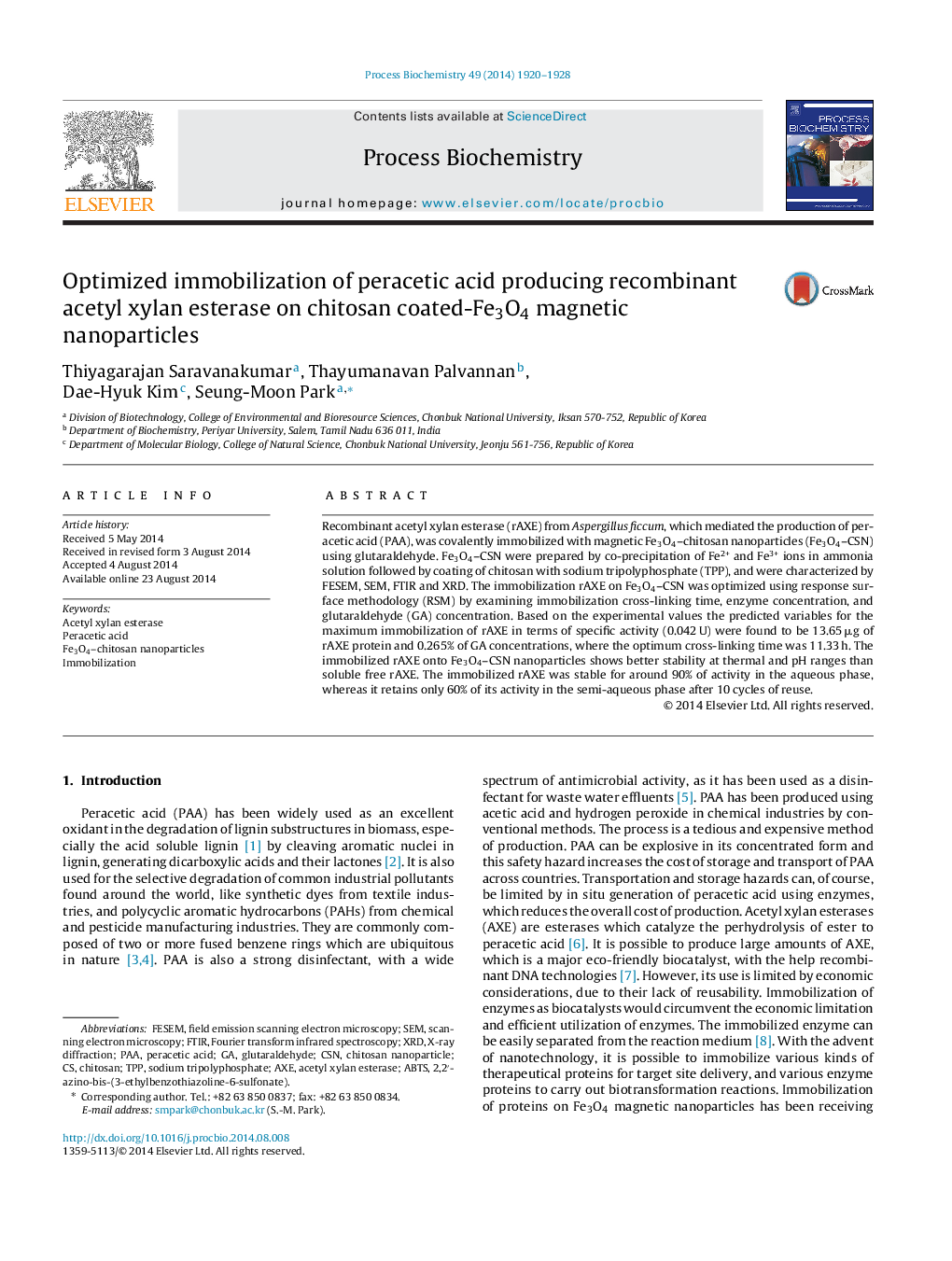| کد مقاله | کد نشریه | سال انتشار | مقاله انگلیسی | نسخه تمام متن |
|---|---|---|---|---|
| 34451 | 45026 | 2014 | 9 صفحه PDF | دانلود رایگان |

• Acetyl xylan esterase was immobilized on chitosan coated magnetic nanoparticles.
• Enzyme to glutaraldehyde ratio with response to time was optimized using CCD of RSM.
• Optimized condition retains better enzyme activity than non-optimized condition.
• Kinetic parameters were determined in the free and immobilized enzyme.
• Peracetic acid (PAA) was produced using immobilized acetyl xylan esterase.
Recombinant acetyl xylan esterase (rAXE) from Aspergillus ficcum, which mediated the production of peracetic acid (PAA), was covalently immobilized with magnetic Fe3O4–chitosan nanoparticles (Fe3O4–CSN) using glutaraldehyde. Fe3O4–CSN were prepared by co-precipitation of Fe2+ and Fe3+ ions in ammonia solution followed by coating of chitosan with sodium tripolyphosphate (TPP), and were characterized by FESEM, SEM, FTIR and XRD. The immobilization rAXE on Fe3O4–CSN was optimized using response surface methodology (RSM) by examining immobilization cross-linking time, enzyme concentration, and glutaraldehyde (GA) concentration. Based on the experimental values the predicted variables for the maximum immobilization of rAXE in terms of specific activity (0.042 U) were found to be 13.65 μg of rAXE protein and 0.265% of GA concentrations, where the optimum cross-linking time was 11.33 h. The immobilized rAXE onto Fe3O4–CSN nanoparticles shows better stability at thermal and pH ranges than soluble free rAXE. The immobilized rAXE was stable for around 90% of activity in the aqueous phase, whereas it retains only 60% of its activity in the semi-aqueous phase after 10 cycles of reuse.
Figure optionsDownload as PowerPoint slide
Journal: Process Biochemistry - Volume 49, Issue 11, November 2014, Pages 1920–1928